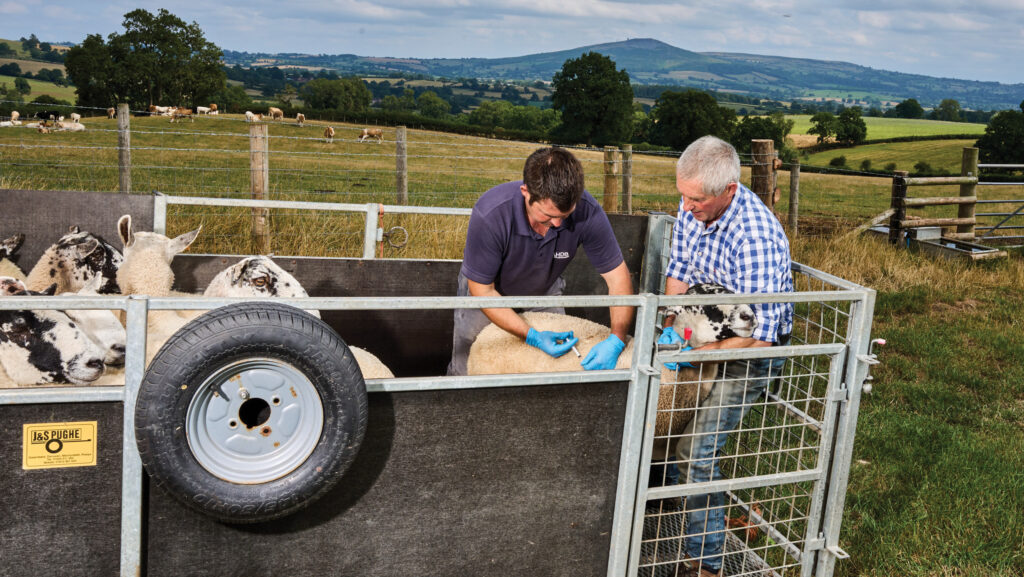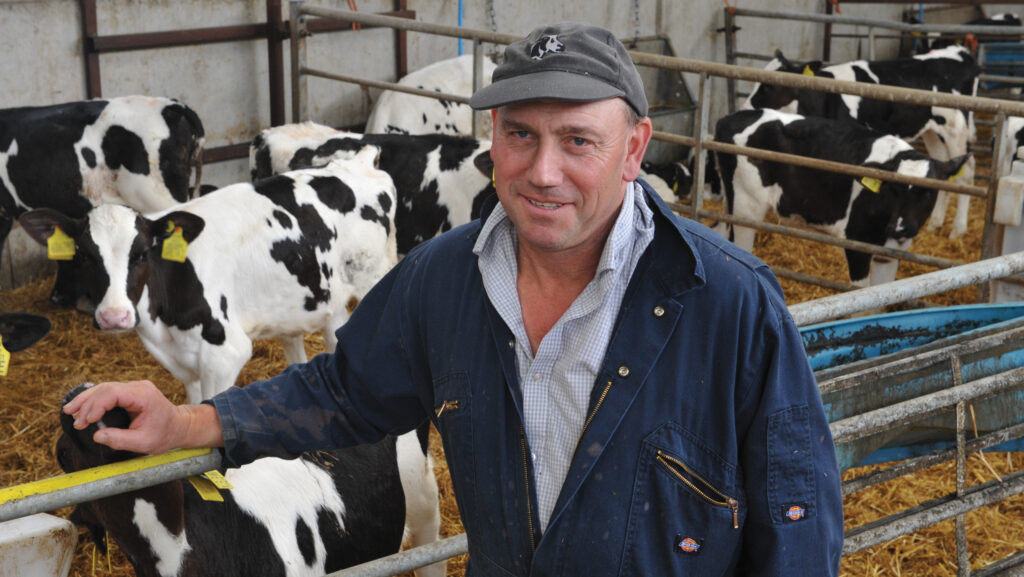Low vaccination rate leaves livestock exposed to bluetongue
 © Oli Lees
© Oli Lees With bluetongue disease knocking on the door, and with less than 3% of the nation’s ruminant livestock vaccinated, government and private vets are urging a much more rapid uptake of the protection available.
Bluetongue virus BTV-8 first appeared in Europe in 2007, and reached the UK with a vengeance last year as a new strain, BTV-3.
In total there were 262 cases involving more than 900 animals, with some flocks suffering significant losses – and now the disease is here again.
At time of going to press there had been seven cases, stretching from Norfolk to Herefordshire.
Symptoms, in both cattle and sheep, range from general lethargy, sores and nasal discharge to abortion, foetal deformities and stillbirths. The consequences for affected animals and farm businesses can be severe.
See also: Bluetongue virus: What to look out for and how to manage it
Vaccination
The importance and effectiveness of vaccination was spelled out by Defra’s head of exotic disease control, Gordon Hickman, in a recent Ruminant Health & Welfare/AHDB webinar.
While the Netherlands has been one of the worst-affected areas for BTV-3 in Europe, Mr Hickman said he was not aware of any cases there in this vector season, with 95% of Dutch livestock said to have been vaccinated.
“There are certainly bluetongue cases in France – both BTV-8 and BTV-3 – and there are cases in Spain. It started in the warmer areas and is spreading north,” said Mr Hickman.
“We can expect more, but clearly countries that have vaccinated widely would expect to see much less disease.”
According to the experts, UK temperatures have been warm enough for long enough to ensure that the midge population is already infected. The peak number of cases in livestock will likely be in September.
“That is getting close, especially if we are looking to get two vaccinations in and allow enough time for full immunity to develop,” vet Sara Pedersen of the Wales Animal Health and Welfare Framework Group told the webinar.
Wales remains particularly vulnerable, despite that fact that the only cases of bluetongue last year came from bought-in animals.
Indeed, the one case seen in Herefordshire last month was in an animal that was destined to move to Wales, and was only kept out due to current movement restrictions.
“We are fortunate that bluetongue hasn’t entered any high-density livestock areas yet, particularly down the Welsh border with England,” said Ms Pedersen.
“But there is growing concern about the poor uptake of vaccination. We have to be ahead of the virus and give time for immunity to build up.”
Misinformation
Efforts to encourage vaccination have been thwarted in part by misinformation on social media, including suggestions that the disease is harmless and that vaccines do not work.
In response, the Wales Animal Health and Welfare Framework Group, in conjunction with the Wales Veterinary Science Centre, launched the #DoNotWaitVaccinate social media campaign in early July.
It aims to encourage livestock keepers to discuss vaccination with their vets, as well as to counter the myths and to get farmers to share their own vaccination experiences.
“Providing this sort of reassurance really is our best way of battling bluetongue,” said Ms Pedersen. “Although vaccination rates are increasing, they are still less than 1% in sheep.”
She urged producers to take a more proactive approach to vaccination, and spare their livestock the potential ravages of a bluetongue outbreak.
Questions and answers
Will we have to vaccinate yearly?
Sara Pedersen: “These are fairly new vaccines, so the manufacturers are still working on this. We think they will be annual vaccinations, but we are waiting for that information to be confirmed.
“But, as I always say, boosters are irrelevant unless you have vaccinated them in the first instance.”
Why can cattle move from England to Wales 21 days after vaccination, but sheep still need a negative pre-movement test?
Sara Pedersen: “The difference is that, in cattle, one of the vaccines (Bultavo-3) has been shown to prevent viremia (when the virus enters the blood stream), which means they cannot infect midges which then infect other livestock.
“Following the Welsh government’s latest announcement, from mid-September, bluetongue-vaccinated sheep from England will be permitted to enter ‘green markets’ in Wales.”
Can the bluetongue vaccine be administered at the same time as other vaccinations?
Sara Pedersen: “The vaccine companies have not fully tested the BTV vaccines alongside other vaccines, so they are not licensed for use at the same time.
“It is therefore sensible to separate them out by a couple of weeks, even though that means extra handling.”
Will there be enough vaccine available?
Gordon Hickman: “It depends which vaccine you want to use, but overall there is a lot of vaccine available.
“Having said that, wholesalers will only hold stocks if there is demand for it, so the advice is to get your orders in and work with your vet.”
If sheep in England are vaccinated, will that then show up as ‘positive’ when you get a pre-movement test?
Phil Thomas (director of the Wales Veterinary Science Centre): “It could potentially show up if you have only just vaccinated.
“In those first few days you are injecting what is essentially antigens from the virus in a killed vaccine. That could interfere with the test, so you would probably not want to do a pre-movement test within a week of vaccinating.”
Resources
A host of useful resources is available to livestock keepers on the Ruminant Health & Welfare Bluetongue Virus Hub, including:
- live virus updates
- frequently asked questions
- a “vaccine decision maker” tool
- a bluetongue movement checker
- a vaccination finance calculator.
Case study: Vaccination makes sense, commercially and socially

Richard Twose © AHDB
Richard Twose, who runs a 400-cow dairy unit plus 300 Lleyn sheep near Whitland in Carmarthenshire, was quick out of the blocks to vaccinate his animals for bluetongue, keen to maximise protection for his pedigree stock.
The dairy side of things was easy enough, he says, as the animals are in twice a day for milking.
But vaccinating the sheep was more of a logistical exercise, as they had to be gathered in and the Bultavo-3 vaccine administered with a suitable two-week gap between other vaccinations, such as Heptavec P.
Getting hold of the 1,500 doses needed for all his livestock – enough for two vaccinations each with a three-week gap in between – was easy enough. It all arrived on farm within two days of ordering, and cost £2.50 a dose.
Mr Twose says vaccination is a no-brainer. “I had heard a lot about the impact of bluetongue in the Netherlands from a contact involved in the sheep export business,” he said.
“I learned that over there, some flocks suffered 70-80% losses from bluetongue, but this reduced to 10% in vaccinated flocks.”
He also felt a social responsibility to vaccinate his animals. “We have been to the Royal Welsh Show, mixing with other animals.
“We did not want to be the ones who picked up the disease and brought it back to Carmarthenshire.”
And then there is the commercial aspect. “Wales is not a restricted zone yet, but if the disease arrives, then perhaps there will be greater opportunities for vaccinated stock to be traded,” he said.
“Currently cattle may come in from England if they are vaccinated, without expensive pre-movement testing. Having my sheep and cattle already vaccinated may yet pay off from a trade point of view.”
Overall, however, Mr Twose says he just wants to play his part, responding to the veterinary advice coming from government and the private sector. And his advice to other farmers is simple: “Get on with it!”
